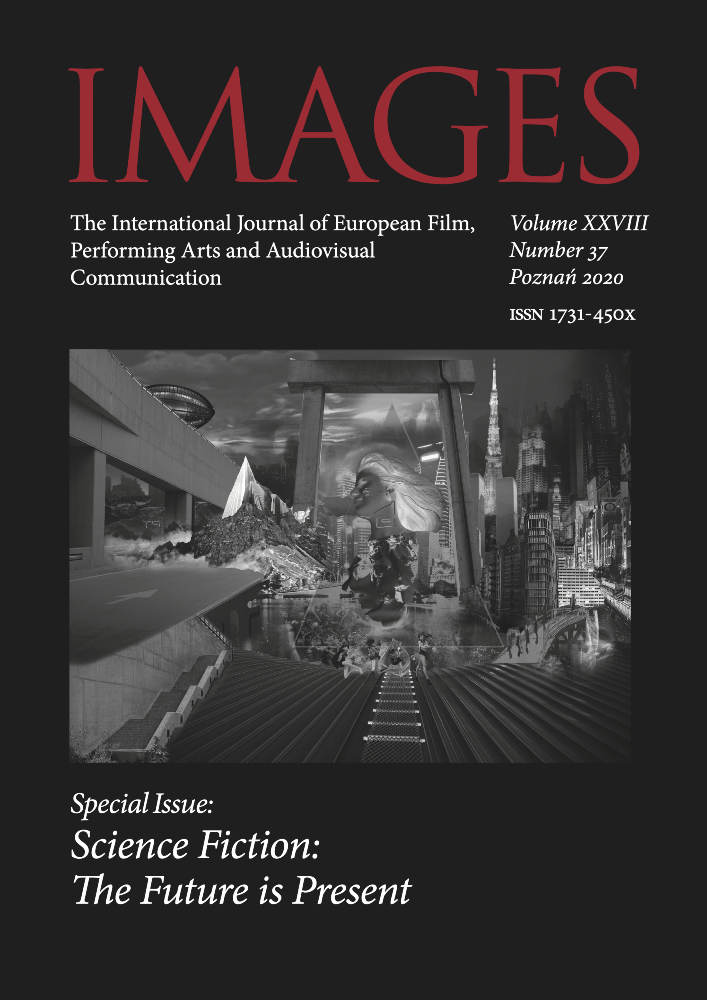Abstract
The article offers a broad overview of Nam-June Paik’s ideas of the expansion of video arts interpreted in the light of Zen Buddhism. His works recognized as the most significant examples of his marriage between the art theory and practice are marked by a thought-provoking vision of participatory culture, communicated in-between the networks in the post-industrial society. Our purpose is to reexamine his attitude to TV culture in the oscillation between Western and Eastern gaze considered in connection to the problems of emptiness and meditation drawn from Zen religious beliefs. In discussing his installations there is special stress to reconstruct his inner-insight into the subject of seeing and watching inscribed in a closed-circuit of the communication network.
References
Baker G., The Artwork and its Tail, “October” 2001, vol. 97
Beaudonnet J.-L., Des écrans singuliers, [in:] “Le cinéma, et après?”, sous le direction de Maxime Schinfegel, Rennes 2010
Belting H., Beyond iconoclasm. Nam-June Pail. Zen Gaze and the escape from representation, [in:] Iconoclash. Beyond the Image Wars in Science, Religion and Art, eds. B. Latour, P. Weibel, Karlsruhe, Cambridge, Massachussets 2002
Fargier J.-P., Ma mère Paik, “Art Press” 1989, no. 141 Golinski H.G., Paik on paper – die Sammlung Peter Wenzel im Museum Bochum, Bochum, p. 11
Herzogenrath W., Wschodnio-zachodni nomada w zaciszu globalnej sieci, [w:] Widok, Driving Media, ed. A. Kubicka-Dzieduszycka, K. Dobrowolski, Wrocław 2009
Hoskote R., Adajania N., NJP. Contributions to an artistic Anthropology, <https://njpac-en.ggcf.kr/>
Joselit D., No exit video and the ready made, “October” 2007, no. 119
Joselit D., Video and the Readymade, “October” 2007, no. 11
Kac E., Foundation and development of robotic art, “Art Journal” 1997, vol. 56, no. 3
Kemp M., Lancing Lasers, “Nature” 2000, vol. 404, 6 April
Kluszczyński R.W., Film-video-multimedia. Sztuka ruchomego obrazu w erze elektronicznej, Warszawa 1999
Koepnick L., Framing Attention. Windows on modern Culture, Baltimore 2007
Kosior K., Szpik Zenu. D.T. Suzuki o podświadomości (nie-umyśle), [in:] Odkrywanie dharmy, red. K. Kosior, Lublin 1993
Martin S., Global Groove, [in:] Video Art, ed. U. Grose- nick, Cologne 2006
Mersch D., Teorie mediów, przeł. E. Krauss, Warszawa 2010
Movin L., The Zen master of video Nam June Paik: Between minimalism and overkill, [in:] Nam-June Paik Video Sculptures: Electronic Undercurrents, Copen- hagen 1996
Paik N.J., George Maciunas and Fluxus, “Flesh Art”, 1978, nos. 84–85
Smith O.F., Fluxus praxis: an exploration of connections, creativity, and community, [in:] At a Distance. Precursors to Art and Activism on the Internet, Cambridge, London 2005
Suzuki D.T., Zen and Japanese Culture, Princeton 1970 Yun M., Nam-June Paik. evolution, revolution, resolution [in:] Nam-June Paik. Becoming Robot, ed. M. Chiu, M. Yun, New Haven, London 2015
Zinman Ch., Nam-June Paik’s Etude 1 and the indeterminate Origins of Diginal Art, “October” 2008, no. 164
Zinman Ch., The indeterminate origins of Digital Media Art, “October” 2018, no. 56
License
Copyright (c) 2020 Kamil Lipiński

This work is licensed under a Creative Commons Attribution 4.0 International License.

